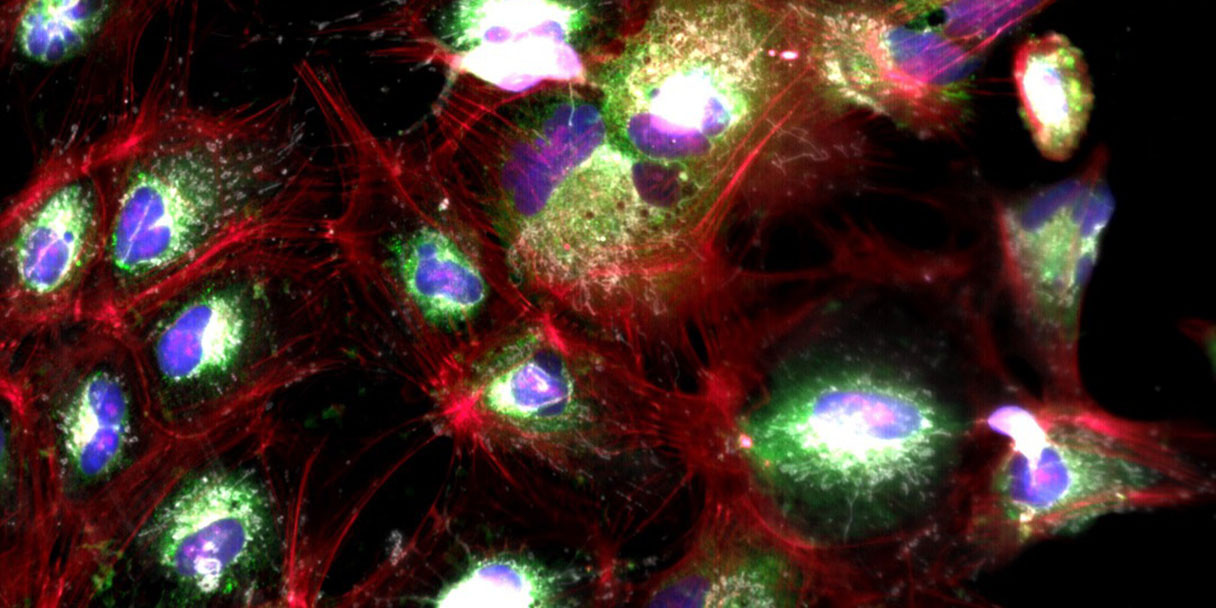ALS progressively destroys nerve cells in the brain and spinal cord, causing people to lose muscle movement required for walking, talking, swallowing and breathing. Currently, the disease is irreversible and has no cure, but a potential therapy that combines gene and stem cell technologies is progressing well, according to Svendsen.
Svendsen has been selected as an inaugural recipient of a grant from the Tambourine ALS Breakthrough Research Fund, funded by Tambourine and administered in partnership with the Milken Institute. The grant will fund research that combines advanced stem cell modeling with artificial intelligence to learn more about the cause of ALS. Svendsen sat down with the Cedars-Sinai Newsroom to discuss his ALS research and new projects that the grant will help fund.
What is unique about the ALS therapy you are developing?
It uses a protein called GDNF (glial cell line-derived neurotrophic factor), which is a nutrient that brain cells can use to mature and survive. It promotes the growth of axons, the threadlike structures brain cells use to communicate, and also helps damaged cells rejuvenate.
In ALS, motor neurons are dying. And there is evidence that GDNF can help protect them. The problem is that GDNF is a large protein and it cannot pass through the barrier that protects the brain by preventing potentially harmful substances from entering it.
So how do you get GDNF into the brain and spinal cord?
We’ve developed a clever technique, like a Trojan horse. We’ve engineered a human stem cell called a neural progenitor to release GDNF, and we’re transplanting those cells into the spinal cords and brains of patients with ALS. The idea is that the progenitor cells mature into healthy support cells and release GDNF that will help heal diseased motor neurons.
How are clinical trials of the therapy going?
Our first trials are to ensure the therapy is safe for patients. We have completed a Phase I/IIa clinical trial to treat the lower motor neuron, which controls leg movement, in 18 patients with ALS. We had good safety data in every one of those patients. Those results were published in Nature Medicine.
We only put the cells on one side of each patient’s spinal cord, so we could compare the treated leg to the nontreated leg. While the focus of this initial study was safety, we did see a trend toward improvement in the treated limb after 12 months, even though the patients were at an advanced disease stage. We plan to perform an additional trial with patients who are earlier in the disease process and with optimized cell targeting, and hope to significantly improve limb function.
As the upper motor neuron in the brain is also affected in ALS, we’ve started an additional safety trial where we will treat the upper motor neurons, specifically those that control hand movement. We’ve treated five patients and the trial is still open. Our next step will be to treat both the upper and lower motor neurons, and at that point, we will also measure the effectiveness of the therapy. If our technique is working, we should see a slowing of disease progression in the treated hand and leg. Research Project Advisor Pablo Avalos, MD; Adam Mamelak, MD, director of the Functional Neurosurgery Program at Cedars-Sinai; and Richard Lewis, MD, director of the Electromyography Laboratory at Cedars-Sinai, are key contributors to this work.
What will the Tambourine grant fund?
With the help of the Cedars-Sinai Biomanufacturing Center, as part of a large consortium called Answer ALS, we have generated induced pluripotent stem cells from 1,000 patients with ALS. We have full clinical records and genomic sequencing for these patients. Induced pluripotent stem cells are adult human cells taken back in time to a stage where they are capable of developing into any cell in the body. We’re then differentiating those cells into motor neurons that are known to die in ALS patients.
In collaboration with MIT [Massachusetts Institute of Technology], we will use the Tambourine grant to fund an advanced imaging project, called cell painting, on these motor neurons. Michael Workman, a project scientist in my laboratory, has been a key contributor to these studies. Up to six fluorescent dyes are used to label different components of the cells. With the help of an advanced, high-powered microscope and massive cloud computing, each individual neuron will be analyzed.
We will use artificial intelligence to attempt to distinguish ALS patients from healthy patients, and then look for molecular “signatures” within ALS patients that define subgroups. This data can be used to develop new targeted drugs to treat specific subgroups of ALS—a truly personalized medicine approach leveraging the latest medical technology. This could be a big boost for clinical trials and drug development.
Read more on the Cedars-Sinai Blog: Regenerative Medicine: A New Path for ALS Treatment


